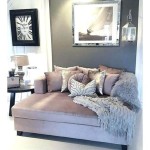Queen Wood Bed No Headboard: A Guide to Choosing the Perfect Bed for Your Bedroom
When it comes to choosing a queen wood bed no headboard, there are a few essential aspects to consider to ensure you make the right choice for your bedroom. Here's a comprehensive guide to help you understand the key features and factors to keep in mind when selecting your bed:
1. Wood Type:
Queen wood beds no headboard come in a wide variety of wood types, each with unique characteristics and aesthetic qualities. Popular options include:
- Oak: Durable, classic, and known for its rich, warm tones
- Pine: Affordable, lightweight, and available in various shades
- Walnut: Dark, luxurious, and highly resistant to wear and tear li>Cherry: Mid-toned, reddish wood, known for its elegant appearance
- Mahogany: Exotic, deep reddish-brown wood, highly durable and resistant to decay
2. Size and Dimensions:
Ensure the bed's dimensions fit your bedroom space and provide ample room for comfortable sleep. Standard queen beds are 60 inches wide and 80 inches long, but you may also consider oversized or custom sizes to accommodate specific needs.
3. Height:
The height of the bed frame can impact the overall look and feel of your bedroom. Low-profile beds create a modern, minimalist aesthetic, while taller beds add height and grandeur. Consider your personal preferences and the style of your bedroom decor.
4. Leg Design:
The legs of a queen wood bed no headboard can vary in design and material. Common options include:
- Bun feet: Classic, rounded shape, ideal for traditional or vintage styles
- Tapered legs: Sleek, modern design, create an elegant and airy look
- Square legs: Contemporary and minimalist, provide a sturdy and geometric appearance
- Metal legs: Durable and stylish, can enhance modern or industrial decors
5. Bed Slats:
Bed slats provide support for the mattress and distribute weight evenly. Ensure the bed frame includes sturdy wooden or metal slats that are securely attached to the frame. Adequate slat spacing allows for proper air circulation and prevents mattress sagging.
6. Style and Finish:
The style and finish of the bed should complement your bedroom decor. Choose a bed with clean lines and a simple design for a minimalist look or opt for a bed with intricate carvings and embellishments for a more traditional or antique aesthetic. The finish, whether natural wood, stained, or painted, can further enhance the bed's appearance.
7. Brand and Warranty:
Consider the reputation and credibility of the bed manufacturer. Look for brands known for quality craftsmanship and durable products. Additionally, check for warranty coverage to protect your investment in case of any defects or issues with the bed.
Conclusion:
Choosing a queen wood bed no headboard requires careful consideration of several essential aspects, including wood type, size, height, leg design, bed slats, style, finish, brand, and warranty. By taking the time to understand these factors and matching them to your specific needs and preferences, you can find the perfect bed to create a comfortable, stylish, and restful sleeping space in your bedroom.
/V5-Oak-Platform-Bed-Frame-By-Get-Laid-Beds-900x675.jpg?strip=all)
Platform Bed No Headboard Get Laid Beds
/Wooden-Platform-Bed-No-Headboard-Normal-High-Res-900x675.jpg?strip=all)
Platform Bed No Headboard Get Laid Beds
/Wooden-Platform-Bed-No-Headboard-Leg-Normal-Res.jpg?strip=all)
Platform Bed No Headboard Get Laid Beds

Bme Ine 14 Queen Platform Bed Frame No Headboard Modern Solid Wood Walnut Com

Enkel Platform Wooden Bed Frame No Headboard By Get Laid Beds Denmark

Bme Ine 14 Queen Platform Bed Frame No Headboard Modern Solid Wood Walnut Com

Platform Storage Bed No Headboard Get Laid Beds

Japanese Platform No Headboard Wooden Bed Frame By Get Laid Beds

The E Stow Platform Bed Storage No Headboard Urban Billy

Low Enkel Platform Bed No Headboard Get Laid Beds







